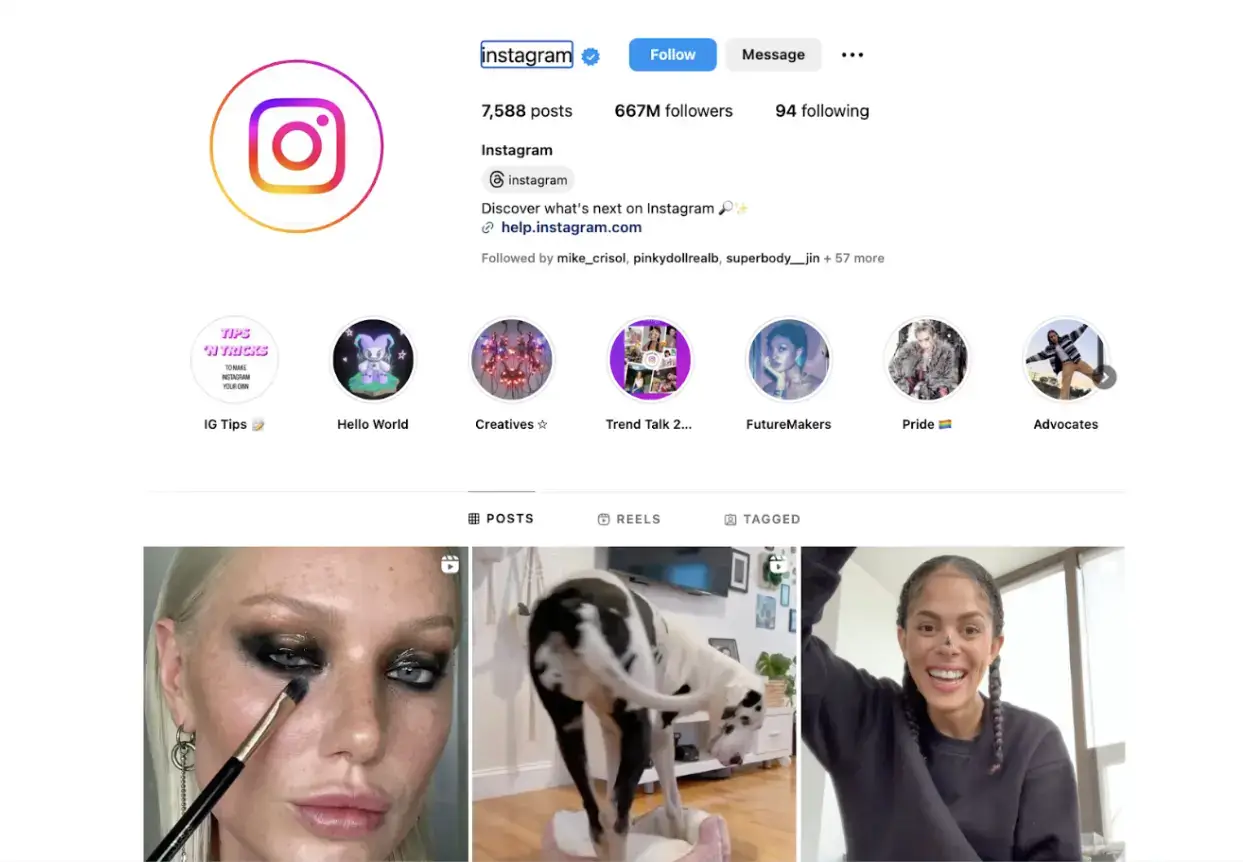One of the biggest impacts of today’s influencer culture is the accessibility of content creation. Anyone can become a trendsetter. But how?
Once you hit 1,000+ followers on social media, you could start earning through sponsorships, in-platform ads, and affiliate programs. You don’t even need much equipment.
However, growing from a micro-influencer to a key opinion leader (KOL) requires a more careful, professional approach.
Becoming an industry leader goes beyond viral posts. Your audience will only recognize you as a credible source after you establish credibility and authority in your niche.
Although trendsetters rarely progress into thought leaders, it isn’t impossible. Here are some steps you can take to use micro-influencer marketing to become an established, trusted individual in your industry.
Skip to:
- What Are the 6 Differences Between a Micro-Influencer and a Key Opinion Leader?
- 5 Types of Social Media Influencers
- Go From Micro-Influencer to Thought Leader (8 Steps)

What Are the Differences Between a Micro-Influencer and a Key Opinion Leader?
- Reach
- Expertise
- Audience
- Credibility
- Goals
- Influence
First, it's important to know that there are 5 different types of social media influencers. It is determined by their follower count.
5 Types of Social Media Influencers
- Nano-influencers: under 10,000 followers
- Micro-influencers: 10,000 to 100,000 followers
- Mid-tier-influencers: 100,000 to 500,000 followers
- Macro-influencers: 500,000 to 1,000,000 followers
- Mega-influencers: More than 1,000,000 followers
Most nano-influencers can reach micro-influencer status by hopping on TikTok trends, posting cute selfies on Snapchat, or uploading interesting pictures on Instagram.
Afterward, they usually start creating YouTube videos. You may see the inspiring stats of YouTube in 2024.
You’ll notice that the micro-influencer classification has a broad range, which, sadly, nano-influencers seldom exceed. It’s a very tall barrier.
Increasing your follower count tenfold is impossible if you keep repeating the same social media marketing (SMM) strategies.
Michael Maximoff, the co-founder and managing partner at Belkins, emphasizes the importance of reach.
He says, “Technically, any influencer type can become a KOL. But in most cases, you must at least reach the upper end of micro-influencer status to establish authority. Adjust your SMM approach based on these factors to become a KOL more effectively.”
-
Reach

Like most aspiring thought leaders and influencers, you’ll likely spend your first few months of SMM expanding your reach. You need a platform to share your ideas.
Otherwise, what you say won’t make much of an impact since you have a very small following.
There’s nothing wrong with documenting your ideas, of course. That’s just not the most efficient route if you want to become a KOL in your industry.
And contrary to popular belief, you can execute organic promotions and paid campaigns simultaneously.
A healthy mix of both will spike your brand growth. Just ensure you mix up your content—recycling posts is cheap but runs the risk of ad fatigue.
-
Expertise
Industry leaders are subject matter experts. They demonstrate their extensive knowledge by publishing case studies, sharing insightful opinions, and hosting seminars, among other ways of educating their audience.
And in most cases, their content contains original insights. They use scholarly articles and publications as references, most of which you won’t find on Google SERPs easily.
There’s no shortcut to becoming a subject matter expert.
Someone who signed up for a few online courses can’t compete against industry professionals backed by years of tenure.
Jim Pendergast, the Senior Vice President at altLINE Sobanco, encourages aspiring KOLs to focus on their strengths.
He says, “The best approach is to utilize your existing expertise. Aspire to become a thought leader in industries that you have formally studied—ideally, you should have the necessary degrees and certifications.”
-
Audience
It’s a common misconception that KOLs exclusively cater to academic scholars. Your target audience depends on your areas of expertise, and you can specialize in any industry you want.
What’s important is that your viewers trust your recommendations.
Apart from growing your following, you must target viewers that likely resonate with your overall branding.
Let’s say you want to talk about beauty brands. Your audience should primarily consist of consumers that use the same products as you—that way, they’ll turn to you for unbiased reviews.
Also, engage with your audience. Thought leaders are always answering questions, solving problems, and providing suggestions on the comments sections of their social media profiles.
In fact, even KOLs with millions of followers still respond to individuals.
-
Credibility
Another factor that separates KOLs from influencers is credibility. For your audience and peers to recognize you as a reputable source, you must have the credentials to back your content.
You can’t just throw around baseless claims. Otherwise, actual KOLs and thought leaders will disprove your statements, making it even harder to build credibility.
Should you find yourself in an influencer takedown, maintain a calm, composed demeanor when responding. Never resort to personal attacks or baseless arguments.
As an aspiring KOL, expect various personalities to challenge your statements publicly, especially controversial ones.
-
Goals
Micro-influencers and KOLs have different goals. Influencers generally leverage their following for monetary gain, while thought leaders focus on providing valuable insights.
Of course, some of their underlying motivations might overlap at times. It’s normal for KOLs to monetize their platforms and make a full-time living on social media. However, they should primarily focus on mission-driven content.
-
Influence

Just because you have loyal fans who trust your recommendations doesn’t mean you’re already influencing them. Micro-influencers and KOLs push purchasing habits.
However, only KOLs can shape the beliefs and opinions of their audience on specific subjects.
Thought leadership goes beyond brand promotions. KOLs usually inspire their audience, raise awareness on socio-political issues, drive positive change, and spark heated yet crucial conversations.
But this isn’t to say you shouldn’t monetize your content.
You can work with brands, promote products, and join affiliate programs—just ensure they align with your mission and vision. At the very least, avoid promotions that go against your morals.
Go From Micro-Influencer to Thought Leader (8 Steps)
- Establish your authority
- Jump on industry trends
- Analyze evergreen topics
- Create a content strategy
- Build brand awareness
- Overhaul your SMM strategy
- Network with other thought leaders
- Continuously expand your knowledge

Once you achieve micro-influencer status and build a solid following, you can work toward establishing yourself as a KOL. Incorporate these steps into your SMM strategies.
1. Establish your authority
We can’t emphasize how important it is for aspiring KOLs to establish authority.
Whether you’re responding to user comments or publishing long-form videos, maintain a reputable, credible persona. Remember: just one misinformed, inaccurate post could tank your reputation.
To minimize the risk of negative PR, hire quality assurance (QA) professionals to filter your content before it goes live.
Ask them to scrutinize your drafts. You should reassess anything that goes against your branding, misleads viewers, or contains outdated insights.
That said, you must also prepare crisis management strategies should your team accidentally publish offensive or inaccurate content. Try to contain negative reactions before they get out of hand.
2. Jump on industry trends
Stay on top of industry-relevant trends and news. You should share your insights on controversial topics, utilize trendy post formats, debunk profiles spreading misinformation, and discuss recent events.
Talking about timely content that your target audience likes could spike your engagement.
You can also incorporate current trends into your SMM.
Use ranking keywords, hashtags, and sounds, among other online elements, when posting online.
It’s a basic SEO strategy to improve your online visibility. Let’s say you’re making a video on TikTok. Instead of playing your favorite songs, research viral sounds that regularly generate thousands of views.
3. Analyze evergreen topics
Evergreen content yields the best long-term returns. Although fleeting trends spike viewer counts, your platforms should primarily consist of discussions that will hold relevance over time.
Incidental pieces attract new viewers, but evergreen topics establish authority.
Ideally, your peers, industry professionals, consumers, and even brand rivals should be referencing you for years to come. Just make sure to update your evergreen pieces routinely.
Double-check outdated facts and provide additional context wherever needed; otherwise, other KOLs and influencers will overtake you by merely publishing fresh pieces.
Eric Mills, the owner of Lightning Card Collection, advises KOLs to consider offloading certain content creation tasks over time.
He says, “Consider hiring a full-time site auditor over time. You’ll have trouble managing all your published posts as your online platforms grow, especially if you’ve been posting for years. Haphazardly sifting through old articles yourself only risks inaccuracies.”
4. Create a content strategy
Source: Semrush
Micro-influencers and KOLs alike should build content calendars and work on their strategy.
Every creator knows first-hand the struggle of publishing high-quality posts when you’re feeling down. Burnout is a real issue, but it doesn’t excuse you from posting online.
The fast-paced, hyper-competitive influencer space leaves you no room for rest—your audience demands regular updates. Otherwise, other creators will take your place.
To ensure that you’ll always have something to post, plan your content ahead of time. Come up with ideas when you’re feeling inspired.
Ideally, you should prepare at least three to four weeks of articles, long-form vlogs, and short videos per batch, although you might push back some of them if you need to cover trending events.
5. Build brand awareness
Treat your personal brand as a business.
You must establish awareness and recognition to build a loyal audience that resonates with your content. Viewers won’t even recognize you if you use super-generic, templated layouts.
One way to stand out from the competition is to use unique elements. Decide on a color scheme and pattern that matches your branding, then apply them across all your platforms.
Your viewers should unconsciously attribute these designs to your brand. Also, choose an industry-relevant, catchy handle.
For instance, high-ticket salespeople could use luxury business names, while medical professionals can look into more formal usernames.
6. Overhaul your SMM strategy
The SMM strategy that helped you achieve micro-influencer status might not necessarily turn you into a KOL. Consider reassessing your approach to PR and marketing.
You should focus on providing valuable insights more often, reduce your sponsored posts, and shift most of your ad spending to organic marketing.
Overall, strive to create a genuine, mission-driven personal brand.
Ditch any sales-y tactic that focuses on financial gain rather than getting you closer to your long-term goals.
7. Network with other thought leaders

Work with other thought leaders in your industry. Collaborations let you tap into new markets and broaden your reach, plus they show that professionals also trust you.
Leverage the audience and tenure of your peers. However, you might notice that KOLs aren’t quick to collaborate with upcoming influencers.
They usually ignore aspiring micro-influencers. To grab their attention, you must at least have a decent following and a respectable online persona.
8. Continuously expand your knowledge

Thought leaders know that becoming a subject matter expert in any industry requires lifelong learning.
Invest enough time and effort into your studies. Sign up for courses, get relevant certifications, and enroll in higher education if possible. Also, keep reading case studies and journals.
A quick search on Google Scholar will produce hundreds of thousands of academic research on any given topic. You just have to utilize your available resources.
Work Toward Becoming a Respected KOL in Your Industry
There’s no cookie-cutter solution to becoming a respected KOL in your industry. You can copy everything a widely known personality does and still get stuck with less than 1,000 followers.
The best approach is to create your own influencer marketing strategy. Identify your target audience, look for market gaps, and assess how to fill them. Overall, always strive to provide value.
To start building a more professional brand, launch a personal website if you don’t have one. You could use modern site builders for ease and convenience.
Advanced systems like POWR feature no-code, drag-and-drop app solutions that can help you launch your first website within hours. Sign up for free and try creating a few templates.




